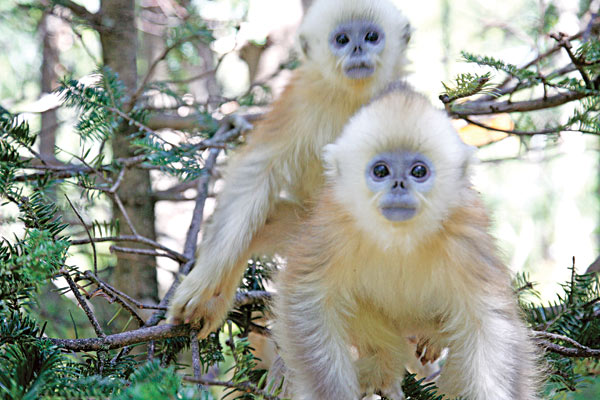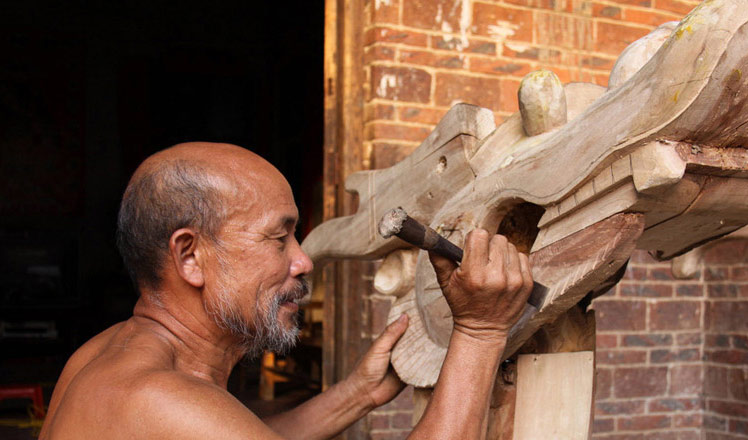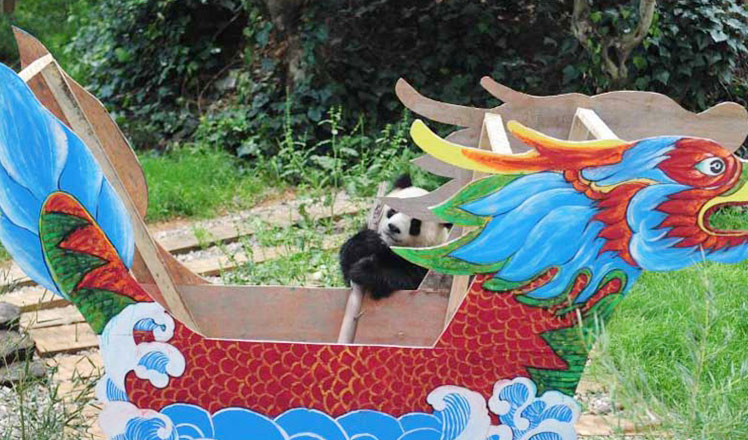The golden creatures of Shennongjia
Updated: 2016-06-11 02:32
By Liu Kun,Liu Xiangrui(China Daily)
|
||||||||
 |
|
Shennongjia Nature Reserve has been one of the most important habitats for golden snub-nosed monkeys, a rare primate living exclusively in China. PHOTOS PROVIDED TO CHINA DAILY |
In 2005, researchers began to provide food to the monkeys, starting with usnea, a kind of parasitic plant growing on pine trees. However, it was too difficult to collect enough of this in winter, and so they started to feed the monkeys apples wrapped in usnea instead.
The monkeys were very cautious at first and they took three months to try the apples and adapt to the new diet, Huang says.
"It was a breakthrough. It allowed us to closely observe the monkeys and laid the foundation for further research on them."
Nowadays, the researchers get up at daybreak to track the monkeys, and feed them three or four meals a day, with usnea, apples, pine cones and other foods.
Over the years, the number of the snub-nosed monkey population in the reserve has risen from about 500 in the mid-80s to more than 1,300 now.
Yang Jingyuan, head of the reserve's scientific research institute, says the achievement is the result of several major national campaigns such as the country's natural forest protection project started at the beginning of the century.
"These projects have reduced human activity and damage to their habitats, and gradually increased their range of activity. The maturing protection network and supply of food in winter has also played a crucial role."
In 2011, the State Forestry Administration of China turned the Dalongtan base into a national research center for golden snub-nosed monkeys. Its activities include artificial breeding, disease research, habitat protection and supplying food in winter.
It collaborates in research with many universities and often receives international scientific research groups.
With greater support from the national government in recent years, the center has carried out more key protection projects related to the species, such as restoring fragmented or degraded habitats and finding potential new habitats in the region.
At its Dalongtan base, the center has set up a 4G monitoring platform that includes technologies such as wireless sensoring, satellite navigation and positioning and cloud services.
"The projects not only benefit the habitat protection and management of the snub-nosed monkeys but may provide an example for protecting other endangered animals," Yang says.
Contact the writer through liuxiangrui@chinadaily.com.cn
- Suspected IS terrorists arrested in Germany
- Japanese boy abandoned by parents in Hokkaido forest found alive
- China to build Africa's biggest university library
- 'Kill list' found in UCLA campus shooter's residence: Police
- Swiss declare Alps tamed as Gotthard rail tunnel opens
- China urges Japan to properly settle Chinese forced laborers issue

 Shanghai Disneyland all set for official opening on Thursday
Shanghai Disneyland all set for official opening on Thursday
 British pageantry on parade for Queen's official birthday
British pageantry on parade for Queen's official birthday
 Carrying bricks to selling carrots: Life of child laborers
Carrying bricks to selling carrots: Life of child laborers
 Graduate revisits same university spot 19 years later
Graduate revisits same university spot 19 years later
 Euro powers land in France for UEFA EURO 2016
Euro powers land in France for UEFA EURO 2016
 The most unusualgaokao candidates in 2016
The most unusualgaokao candidates in 2016
 Elderly man carries on 1000-year old dragon boat craft
Elderly man carries on 1000-year old dragon boat craft
 Row your dragon boat, cute pandas in Yunnan!
Row your dragon boat, cute pandas in Yunnan!
Most Viewed
Editor's Picks

|

|

|

|

|

|
Today's Top News
Abe's blame game reveals his policies failing to get results
Ending wildlife trafficking must be policy priority in Asia
Effects of supply-side reform take time to be seen
Chinese State Councilor Yang Jiechi to meet Kerry
Chinese stocks surge on back of MSCI rumors
Liang avoids jail in shooting death
China's finance minister addresses ratings downgrade
Duke alumni visit Chinese Embassy
US Weekly

|

|







